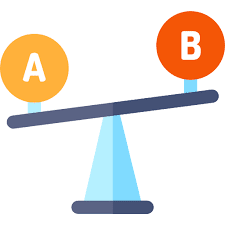Comparing Le Jetee, the short, and 12 Monkeys, the full-length movie
Part 1:
Graphics
On a rough count, there are over 400 stills in La Jete, with some repeats. But it's the variation in Marker's usage that makes the overall effect so potent. He employs clean cuts for traditional shot-reverse-shot sequences, cross-fades or dissolves for a dreamlike ambience, and longer holds to allow us to really explore and absorb certain images. The audio, generally used with great subtlety, sometimes accentuates the visuals more overtly, with a pounding heartbeat-type percussion in sinister scenes or even a seductive score for the most romantic interlude.
Plot
While the premise and climactic twist of La Jete might seem to focus on the mystery of the virus and stopping it, Marker appears more interested in the exploration of time itself. This is where 12 Monkeys steps in. The writers and Gilliam set up a more traditional plot-driven mystery: five million people died in 1996 and 1997, and Bruce Willis' Cole is sent back to gather intelligence to stop the outbreak. Suspicions center on the protest group Army of the Twelve Monkeys, led by Brad Pitt's Jeffrey Goines. Cole eventually convinces his psychiatrist Catherine Railly (Madeleine Stowe) that he's a time traveler, and together they attempt to thwart Goines' crew.
Terry Gilliam
Terry Gilliam has always had a complex relationship with studio filmmaking, and 12 Monkeys, made in the 1990s when he was most embedded in the system, reflects this. It's a fascinating, at times jarring, mix of big-budget, A-list starring fantasy with his own recurring preoccupations: loners fighting oppressive regimes, notions of sanity, and distorting wide angles to convey a skewed vision of humanity. It's delirious but serious, delighting in obscure flourishes and nods to other filmmakers, with the main one sending us even deeper down the Chris Marker rabbit hole.
Conclusion
12 Monkeys attempts and achieves something unusual: splicing genres from cerebral sci-fi to paranoid thriller to doomed romance, taking risks in its diversions and digressions, and infusing a slick Hollywood studio project with an antique anarchic sensibility. It features standout performances from Willis, Stowe, and even Pitt, making it a compelling and thought-provoking film.
Yet, for all its invention and expansion of Chris Marker's story, does 12 Monkeys ever come to life in the same way as La Jete? Can any traditional motion picture? In La Jete's celebrated sequence where still images come to life for a fleeting moment, one could say it's a photo-roman overcoming, transforming, in Marker's words, "the vertigo of time." Perhaps that's more than any film, perhaps even any person, can achieve, even when keeping their eyes wide open and looking for ways to retain and reimagine the past.
Music
The video ends with a musical outro, leaving the audience with a lingering sense of contemplation about the nature of time, memory, and cinematic storytelling.
I hope this provides a helpful conclusion to the video analysis. Feel free to ask any further questions you might have about the film or the relationship between 12 Monkeys and La Jete.
Part 2:
My main takeaways from the article are:
- La Jetée's groundbreaking use of still images and the power of memory: This film pushed the boundaries of storytelling, proving that static visuals can be incredibly evocative and impactful. The emphasis on the "jetée" scene as a pivotal memory resonated deeply with me.
- 12 Monkeys' expansion on La Jetée's world and themes: Gilliam builds upon the post-apocalyptic world and explores the virus theme further, adding technological elements and a more frantic, unsettling atmosphere. The exploration of distrust towards authority also struck a chord.
- Connections between the films: The article highlights the shared elements like time travel, the mysterious scientists, and the connection between characters through specific memories. This comparison provides valuable insights into how films can build upon each other and reinterpret similar themes.
These takeaways can be helpful for my short film process in several ways:
- Exploring innovative storytelling techniques: La Jetée's use of still images and fragmented narrative inspires me to consider alternative formats and non-linear approaches to storytelling.
- Building a memorable atmosphere: The post-apocalyptic settings and unsettling elements in both films demonstrate the importance of creating a distinct and impactful atmosphere that reflects the story's themes.
- Developing character connections: The shared memories and mysterious relationships between characters offer inspiration for crafting emotionally resonant connections in my own film.
- Reinterpreting familiar themes: Seeing how 12 Monkeys builds upon La Jetée's themes shows me how I can take inspiration from existing works and offer my own unique interpretation.
Overall, this article provides a fascinating exploration of two interconnected films and offers valuable lessons for approaching my own short film with creativity and depth. I'm now more aware of the power of memory, innovative storytelling techniques, and building connections between characters in creating a truly impactful film.




Comments
Post a Comment